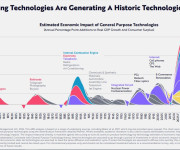Why a DXP should be an integral part of your marketing strategy?
With the growing number of digital touchpoints and channels through which customers communicate with a brand, there is a need for a comprehensive digital ecosystem that will help you keep everything sales and marketing-related in one place. This digital ecosystem is called a DXP – digital experience platform. What do you need to know about them? And how do they make your life easier? That’s what we’re going to talk about today.
DXPs are online (typically cloud-based) platforms that enable users to integrate diverse digital tools and apps within one intuitive dashboard. The goal is simple – to enhance UX and optimise your marketing efforts.
What are DXPs made of?
In general, DXPs allow you to exploit effectively:
- Digital touchpoints (e.g., through mobile, web, AR and IoT channels)
- Digital products (primarily CMS, e-Commerce features and intranet)
- Customer data analysis
In the heart of every DXP lies a content management system (CMS). Every decent DXP platform comes with an extensive content feature that enables you to manage, deliver and publish content in specified channels (e.g., your website and social media platforms). There are also many additional tools that help you collaborate with co-workers and optimise your content for SEO purposes.
Secondly, many DXPs offer e-commerce features to manage your online store from one place, including product management, shopping carts, payments, and deliveries.
Thirdly, DXPs flourish in the mobile world. All your mobile apps can be integrated with your DXP. You can also use this platform to design PWAs and ensure all your digital products and websites are fully mobile-friendly.
Lastly, DXPs are filled with analytics features. As we all know, modern marketing is based on customer data originating from various sources. DXPs enable you to analyse it thoroughly by integrating all your marketing and sales data in one place.
Two types of a DXP
Usually, we talk about two different kinds of digital experience platforms. We have something called a single-stack DXP and a headless DXP. In the single-stack approach, you have access to different solutions (or a suite of products) coming from the same vendor. Here, you have five crucial single-stack DXP providers: Acquia, Adobe, Episerver, Liferay and Sitecore.
Headless DXPs are based on a set of individually selected products. Everything is connected through an API-based integration layer. Here, the tools you use can come from different companies. These DXPs are tailor-made and require a bit more work to get everything up and running, but at the end of the day, you get a solution that’s perfectly adjusted to your needs and the profile of your company.
The main benefits of DXPs
The major advantage every DXP offers is that you can work in a much more effective way. You have easy access to everything you need and can seamlessly analyse marketing data. As a result, your marketing campaigns can be far more effective, allowing your business to grow.
Secondly, because you can integrate many communication channels in one place, your target audience gets improved, personalised UX. In effect, you can retain more customers and increase brand engagement.
It is also vital to emphasise that DXPs are very flexible. You can easily add new solutions and features as necessary. And because the vast majority of DXPs use the API layer, you can implement new and advanced solutions such as headless commerce. It really is a future-proof solution!
If you’d like to find out how DXPs can enhance work in your company, click the link and schedule a free consultation.


























